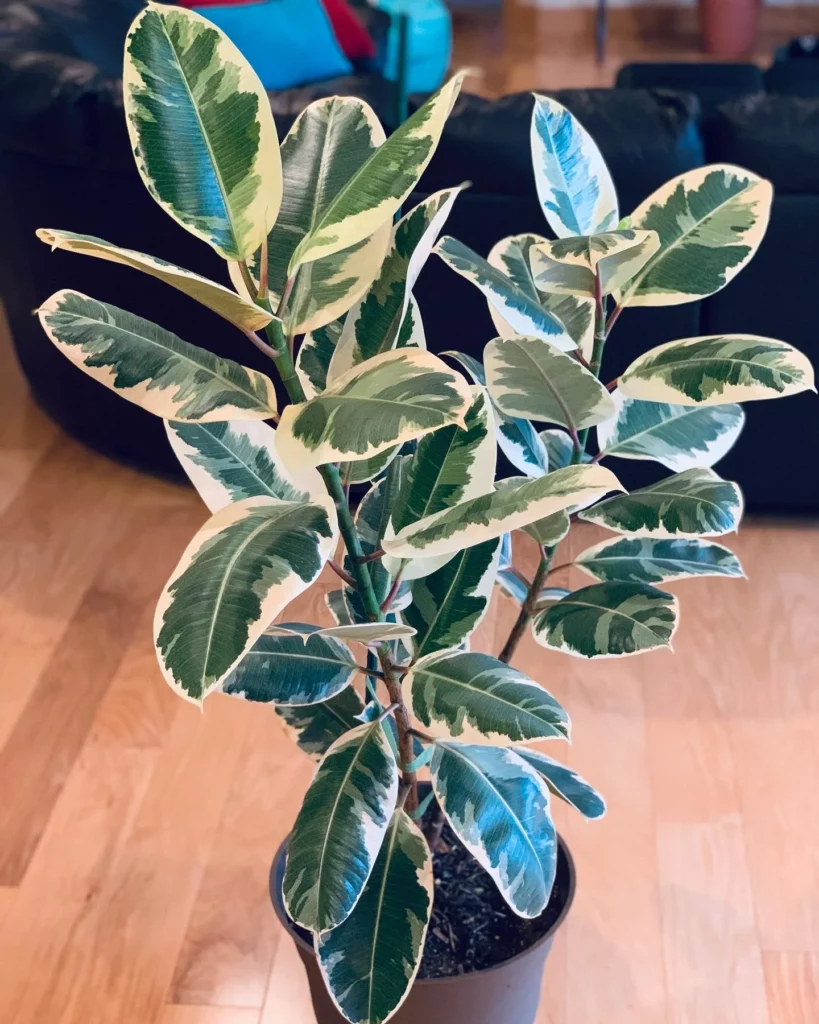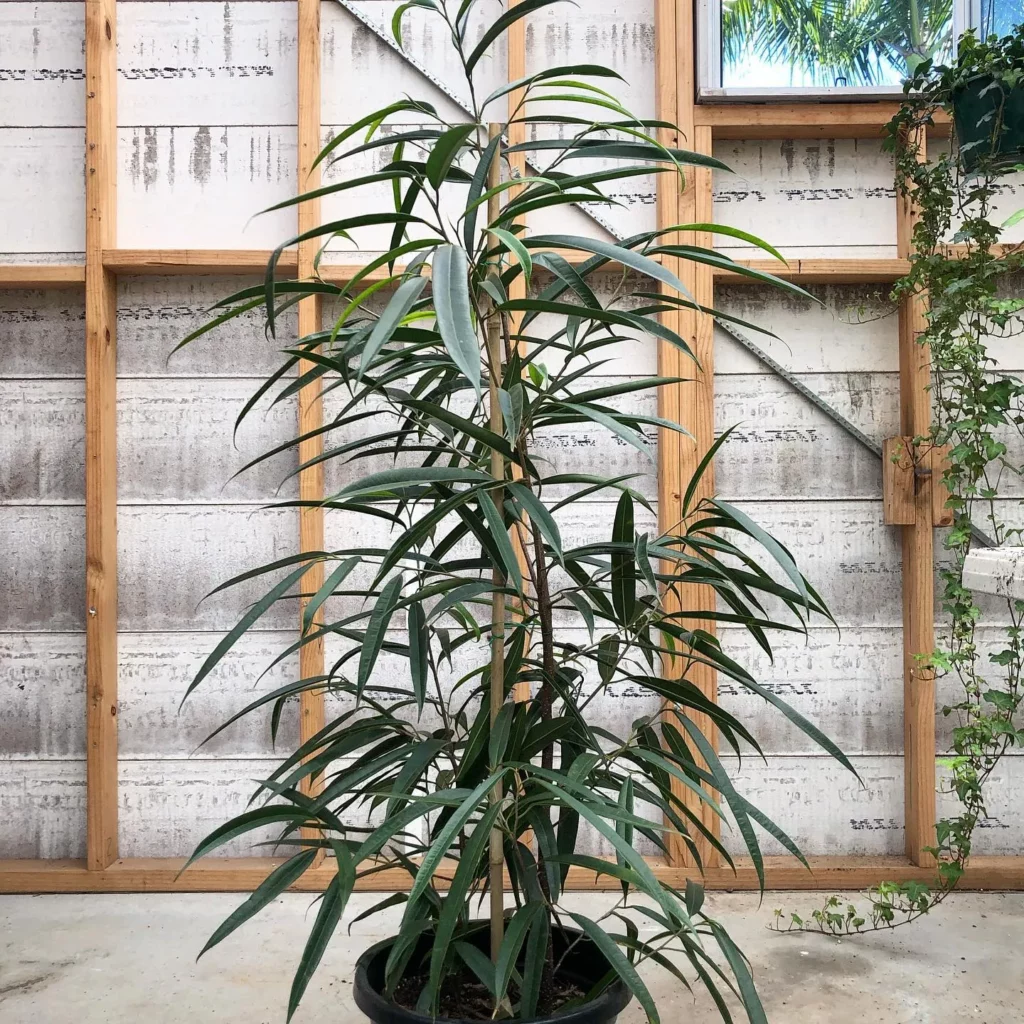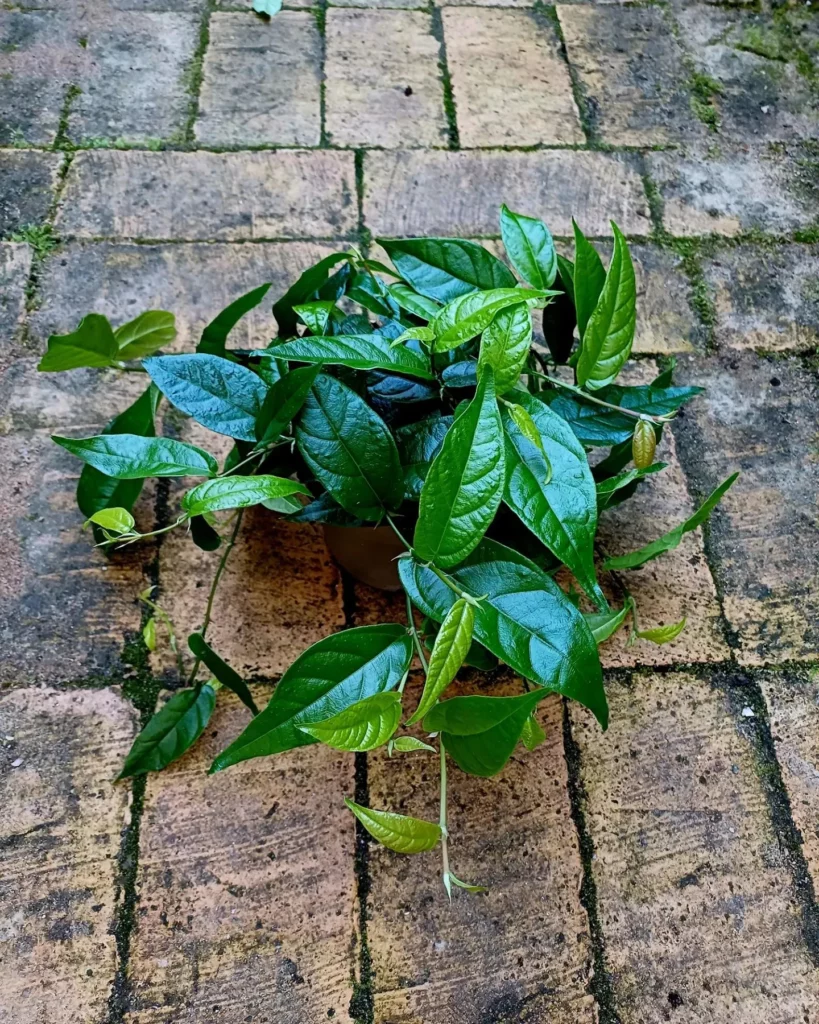Let’s start by getting to know Ficus benjamina Starlight, also known as the Weeping Fig, a popular choice among houseplant enthusiasts for its graceful appearance and easy maintenance. This stunning plant belongs to the Moraceae family and is native to Southeast Asia and Australia. With its elegant, variegated foliage featuring creamy white and green leaves, Ficus benjamina Starlight adds a touch of sophistication to any indoor space.
Key Takeaways:
- Learn how to care for Ficus benjamina Starlight and achieve its full, radiant growth.
- Understand the common names, botanical information, and characteristics of Ficus benjamina Starlight.
- Discover the essential guidelines for growing Ficus benjamina Starlight successfully.
- Explore different methods of propagating Ficus benjamina Starlight.
- Get a quick care overview and essential care requirements for Ficus benjamina Starlight.
About Ficus benjamina Starlight
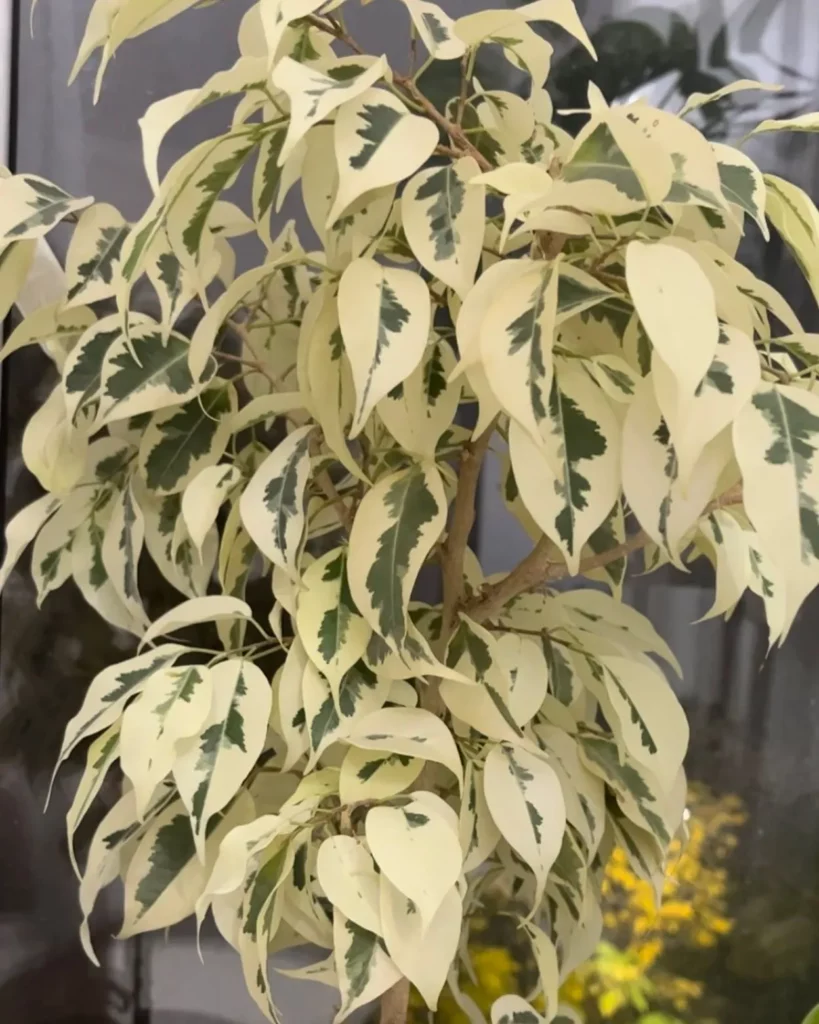
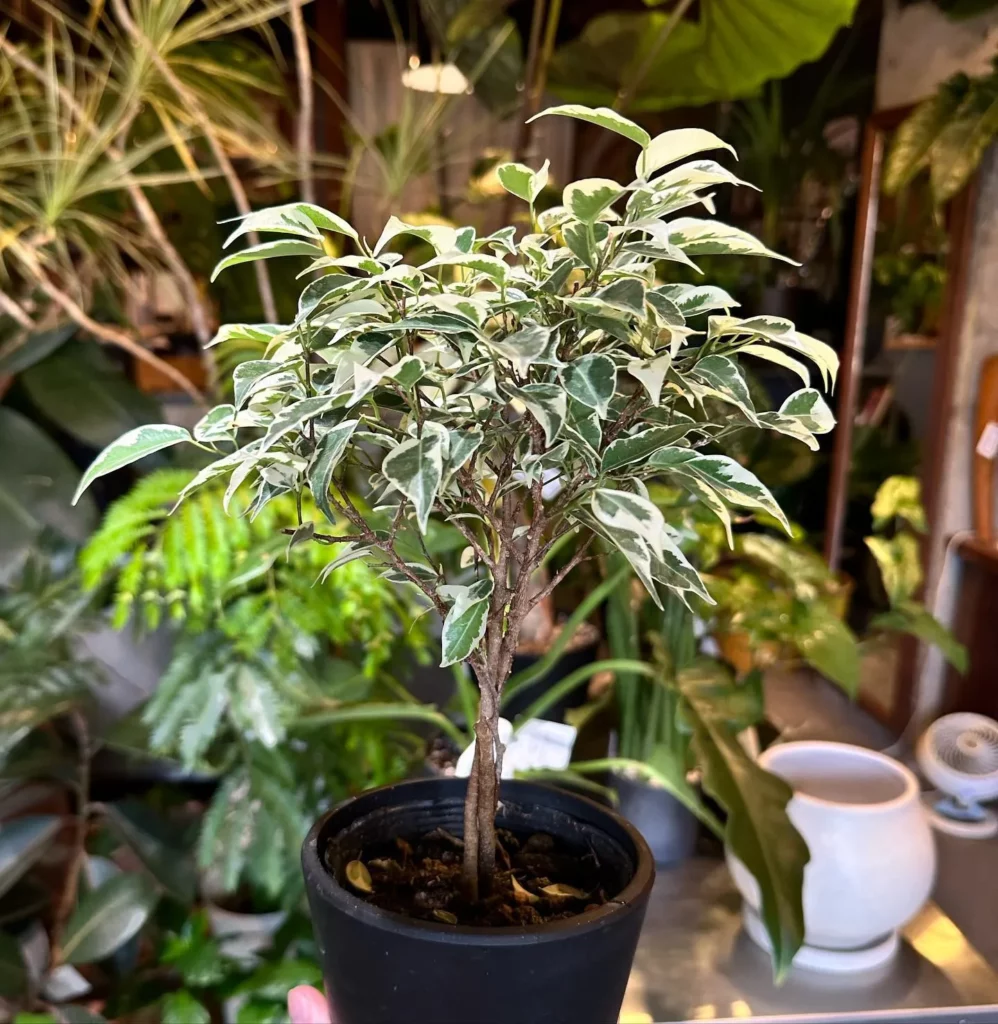

Known for its adaptability, Ficus benjamina Starlight thrives in bright, indirect light but can also tolerate lower light conditions. Its mature size can reach up to 10 to 12 feet tall, making it an excellent choice for adding vertical interest to your home or office.
| Botanical Information | Ficus benjamina Starlight |
|---|---|
| Common Names | Weeping Fig, Ficus Starlight |
| Plant Type | Perennial |
| Flower Color | Non-flowering |
| Native Area | Southeast Asia and Australia |
| Hardiness Zones | 10-11 (USDA) |
| Toxicity | Considered toxic to humans and animals if ingested |
How to Grow Ficus benjamina Starlight

Growing Ficus benjamina Starlight is a rewarding experience, but it requires attention to specific aspects of care to thrive in your home.
To ensure the healthy growth of your Ficus benjamina Starlight, it’s essential to choose the right location. This houseplant thrives in bright, indirect light, making it ideal for areas near east- or west-facing windows. Avoid placing it in direct sunlight, as this can cause leaf burn.
Ficus benjamina Starlight prefers well-draining soil with a slightly acidic to neutral pH level. A mix of peat moss, perlite, and potting soil will provide the necessary drainage while retaining moisture. When watering your plant, make sure the top inch of the soil is dry before watering again, as overwatering can lead to root rot.
Proper fertilization is crucial for the growth and health of your Ficus benjamina Starlight. Use a balanced, water-soluble fertilizer during the growing season, following the package instructions for dilution and frequency. Avoid over-fertilization, as this can cause leaf discoloration and other issues.
| Light | Soil | Watering | Fertilizing |
|---|---|---|---|
| Bright, indirect light | Well-draining soil with slightly acidic to neutral pH | Allow top inch of soil to dry before watering | Use a balanced, water-soluble fertilizer during growing season |
Additional Tips for Growing Ficus benjamina Starlight
- Regularly monitor the humidity levels around your Ficus benjamina Starlight. It appreciates higher humidity, so misting the leaves or placing the pot on a tray filled with water and pebbles can help create a more suitable environment.
- Keep an eye out for common pests, such as aphids and spider mites. Regularly inspect the plant’s leaves and stems, and if you notice any signs of infestation, treat it promptly with organic insecticidal soap or neem oil.
- Pruning is essential to maintain the shape and size of your Ficus benjamina Starlight. Remove any dead or yellowing leaves, and trim back excessive growth to encourage bushier growth.
- When repotting your Ficus benjamina Starlight, choose a container that is slightly larger than the current one. Gently loosen the roots before placing it in the new pot, and fill in the gaps with fresh potting soil.
Propagation Tips for Ficus benjamina Starlight
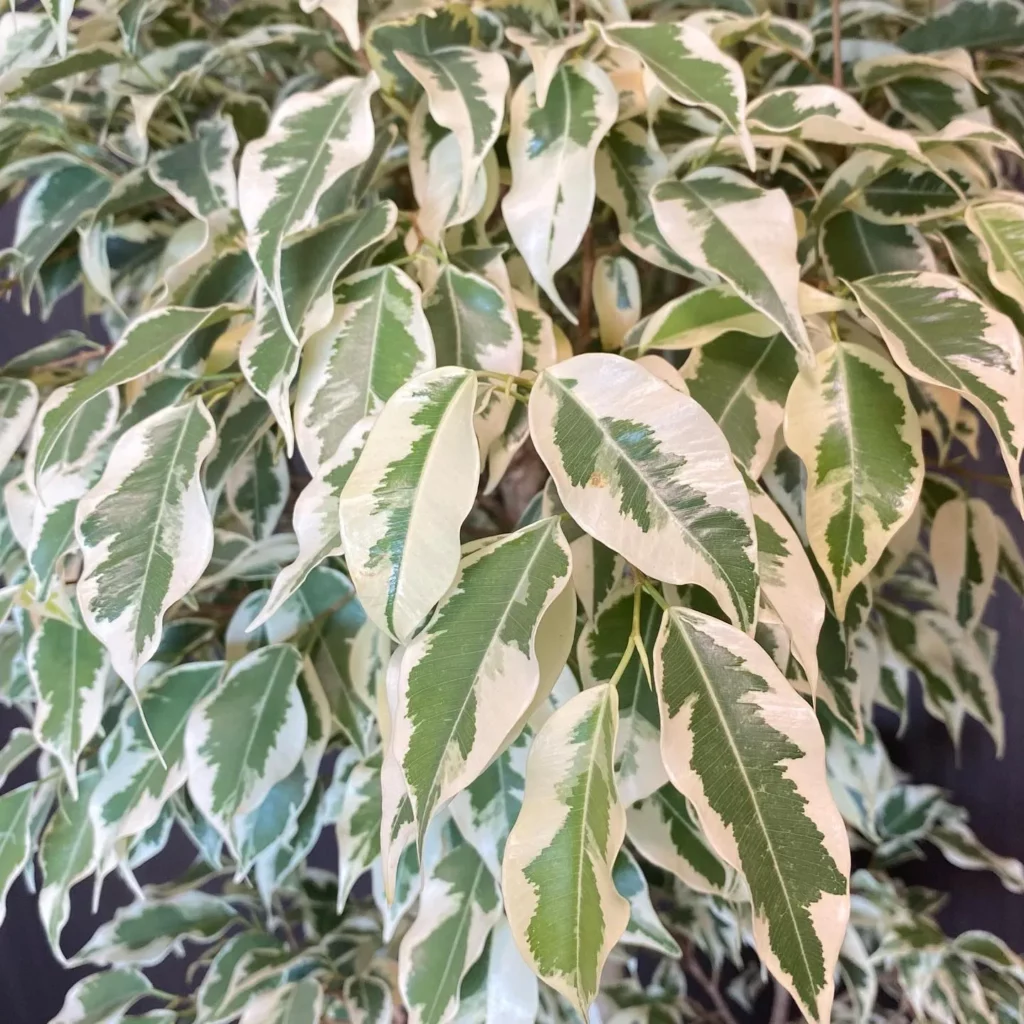

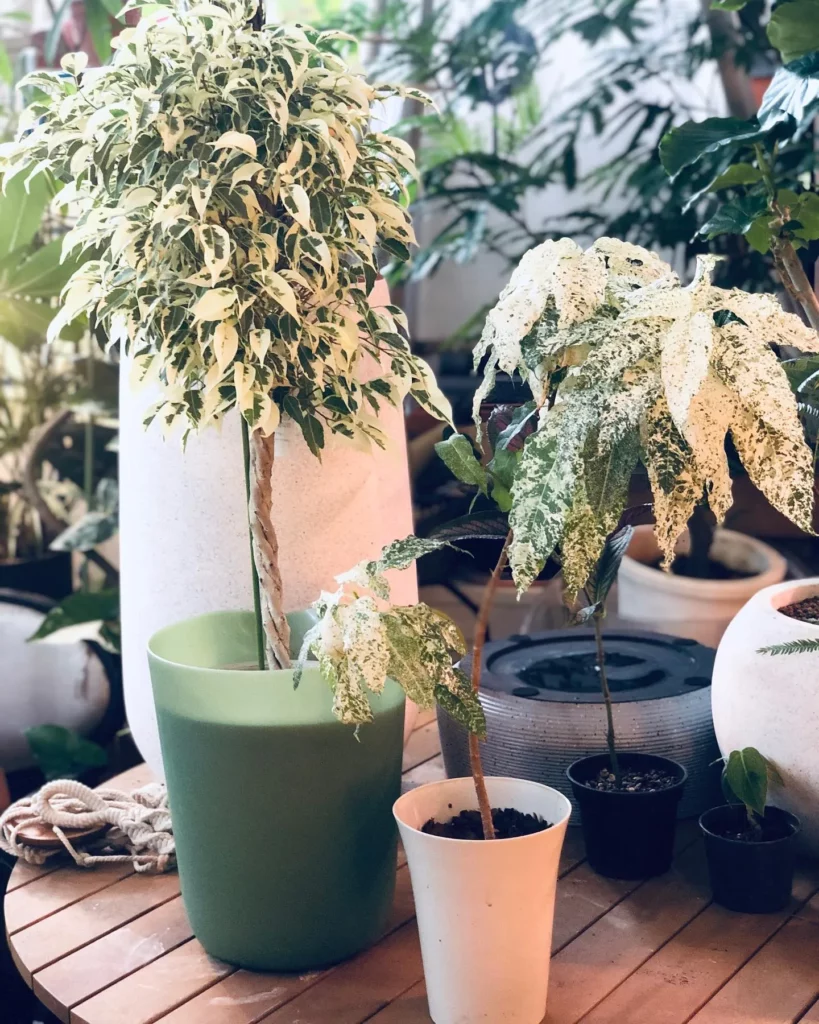
If you want to propagate Ficus benjamina Starlight, there are a few reliable methods you can try to successfully reproduce this stunning plant. One common method is stem cuttings, which involves taking a cutting from a mature Ficus benjamina Starlight plant and rooting it in water or moist soil.
To do this, select a healthy stem with several leaves and make a clean cut just below a node. Remove the lower leaves, leaving only a few at the top, and place the cutting in water or moist soil. Keep the cutting in a warm and humid environment, and within a few weeks, it should develop roots.
Another method of propagation is air layering, which is particularly useful for larger Ficus benjamina Starlight plants. Start by selecting a healthy lower branch and making a small incision or removing a section of bark.
Apply rooting hormone to the exposed area to encourage root growth. Wrap the wounded section with moist sphagnum moss and secure it with plastic wrap. Within a few weeks, roots should develop. Once the roots are well-established, you can cut the branch below the root zone and plant it in a separate pot.
| Propagation Method | Advantages | Disadvantages |
|---|---|---|
| Stem Cuttings | Relatively easy and straightforward | Takes time for the cutting to develop roots |
| Air Layering | Works well for larger plants | Requires more time and effort |
Propagation Tips:
- Choose healthy stems or branches for propagation.
- Use clean, sharp tools to take cuttings to minimize damage.
- Apply rooting hormone to increase the chances of successful root development.
- Provide a warm and humid environment for the cuttings to promote root growth.
- Monitor the moisture levels in the soil or water to prevent drying out or overwatering.
- Be patient and give the propagated plant time to establish roots before transplanting.
Quick Care Overview for Ficus benjamina Starlight
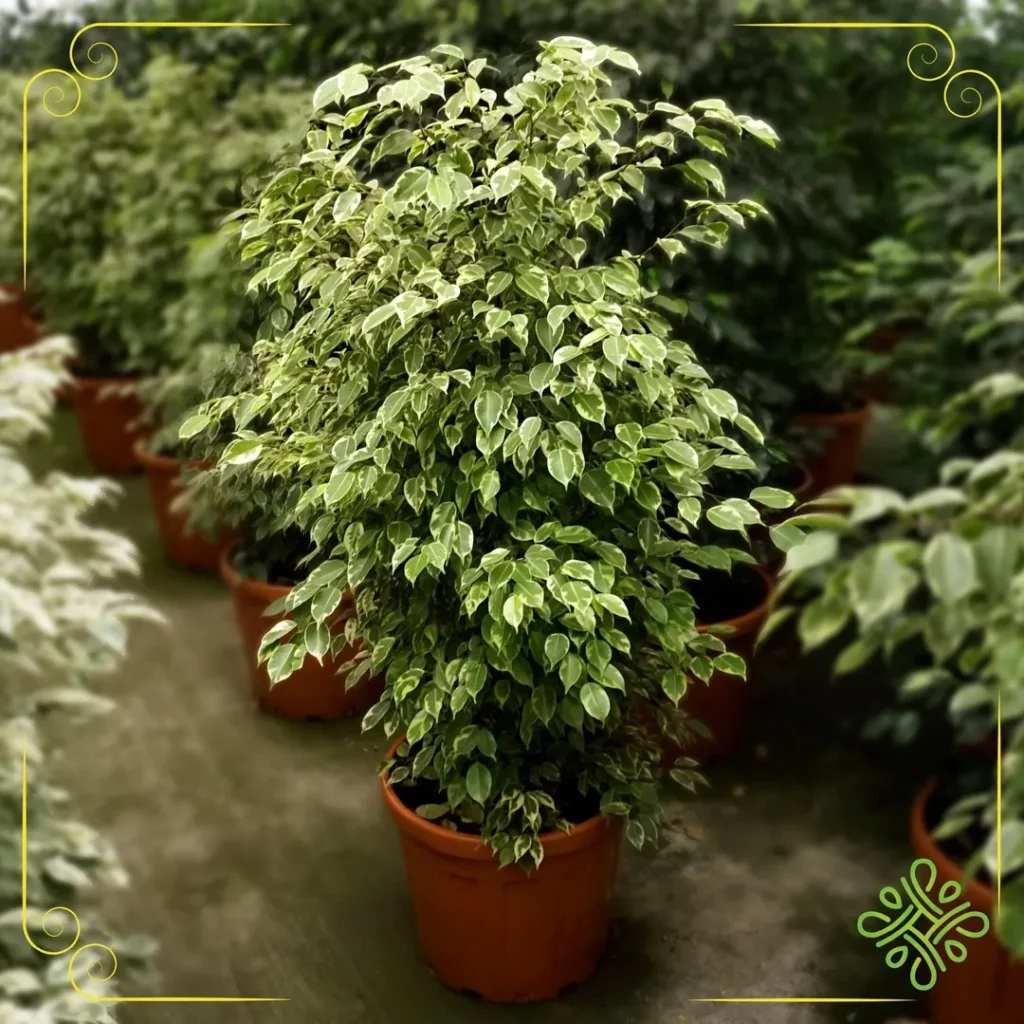
To ensure the well-being of your Ficus benjamina Starlight, it’s important to have a quick understanding of its basic care needs. This stunning houseplant requires proper light, soil, watering, temperature, humidity, and fertilization to thrive.
Light Requirements
Ficus benjamina Starlight thrives in bright, indirect light. It should be placed near a window where it receives filtered sunlight. Avoid exposing it to direct, harsh sunlight as it can lead to leaf burn.
Soil Requirements
Plant your Ficus benjamina Starlight in well-draining soil that retains moisture. A mixture of peat moss, perlite, and potting soil works well. Ensure the soil pH is between 6 and 7, slightly acidic to neutral.
Watering and Fertilizing
Water your Ficus benjamina Starlight when the top inch of soil feels dry. Ensure thorough watering until water drains out of the pot’s drainage holes. Avoid overwatering as it can lead to root rot. Fertilize once a month during the growing season using a balanced houseplant fertilizer.
Temperature and Humidity
Maintain a temperature range of 60°F to 75°F (15°C to 24°C) for your Ficus benjamina Starlight. Keep it away from drafts and extreme temperature fluctuations. This plant appreciates moderate humidity levels, so consider using a humidifier or placing it near a tray of water to increase humidity.
Propagation Tips
If you’re interested in expanding your collection of Ficus benjamina Starlight or sharing its beauty with others, you can propagate it through stem cuttings or air layering. Both methods have a high success rate and are relatively easy to follow. Take cuttings from healthy stems and root them in water or a well-draining rooting medium for successful propagation.
Potting and Repotting
When potting or repotting your Ficus benjamina Starlight, choose a container that provides ample space for root growth. Use a well-draining potting mix and ensure the new pot has drainage holes. Repotting is typically required every 2-3 years to prevent the plant from becoming root-bound.
Common Pests and Diseases
While Ficus benjamina Starlight is generally a resilient plant, it can be susceptible to common houseplant pests like aphids, scale insects, and spider mites. Regularly check for signs of infestation and treat early using organic insecticidal sprays or by wiping the leaves with a damp cloth.
Additionally, be mindful of common diseases such as root rot and leaf spot, and maintain good plant hygiene to prevent their occurrence.
| Light | Soil | Watering | Temperature & Humidity | Propagation | Potting & Repotting | Pests & Diseases |
|---|---|---|---|---|---|---|
| Bright, indirect light | Well-draining soil, pH 6-7 | Water when top inch of soil is dry | 60°F to 75°F (15°C to 24°C); moderate humidity | Propagate through stem cuttings or air layering | Use well-draining potting mix, repot every 2-3 years | Watch out for aphids, scale insects, spider mites, root rot, and leaf spot |
Light Requirements for Ficus benjamina Starlight
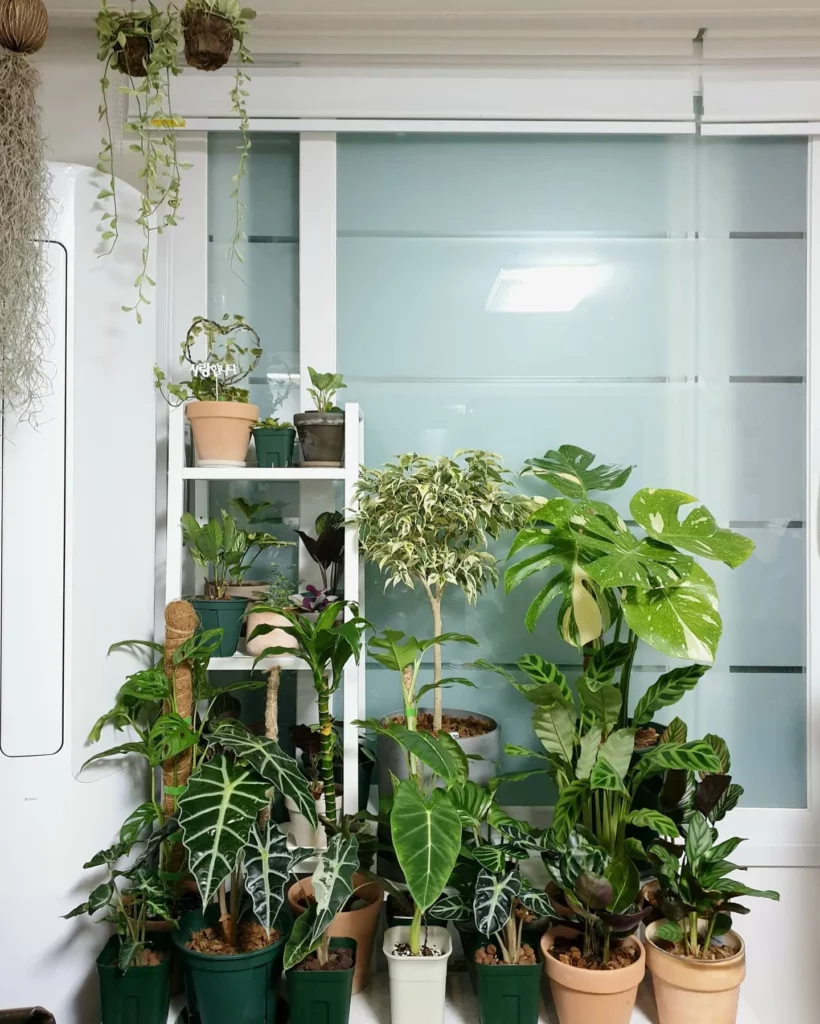

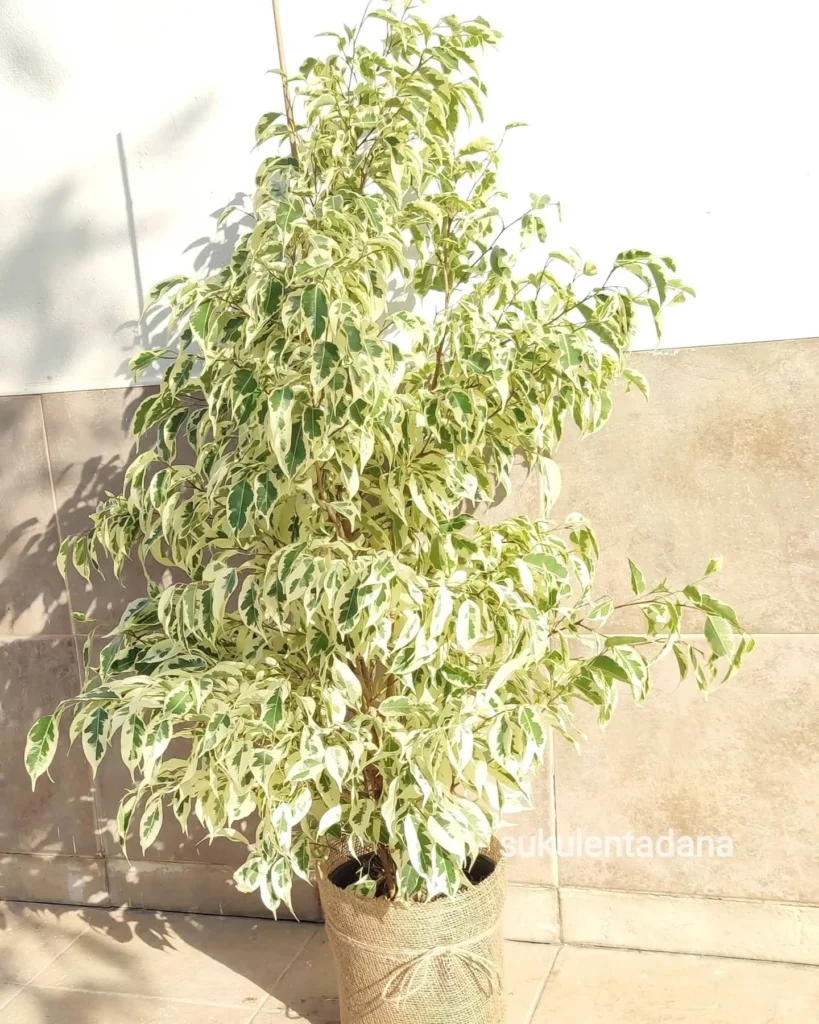
Ficus benjamina Starlight thrives in certain lighting conditions, which play a crucial role in its growth and overall health. As an indoor plant, it prefers bright, indirect light. Placing it near a north or east-facing window is ideal as it receives moderate sunlight without being exposed to direct rays that can scorch its leaves.
If you don’t have access to sufficient natural light, you can supplement it with artificial lighting. LED grow lights with a spectrum of 6400K to 7000K are recommended to simulate natural daylight. Position the lights 8 to 12 inches above the plant and adjust the duration to match the light requirements of Ficus benjamina Starlight.
Signs of Inadequate Lighting
Inadequate light can negatively impact the growth of Ficus benjamina Starlight. Here are some signs that indicate insufficient lighting:
- Leaves turning pale or yellowish
- Stunted growth and leggy stems
- Leaf drop
If you notice any of these signs, consider adjusting the light exposure or providing supplemental lighting to ensure the well-being of your Ficus benjamina Starlight.
Lighting Conditions for Ficus benjamina Starlight
| Light Level | Description |
|---|---|
| Bright Indirect Light | Receives moderate sunlight, no direct exposure |
| Artificial Light | LED grow lights with 6400K to 7000K spectrum |
| Inadequate Light | Leaves turn pale or yellow, stunted growth, leaf drop |
Soil Requirements for Ficus benjamina Starlight

Choosing the right soil and ensuring proper drainage is key to creating a favorable environment for your Ficus benjamina Starlight. This tropical houseplant thrives in well-draining soil that retains some moisture while allowing excess water to escape easily. A good potting mix for Ficus benjamina Starlight consists of equal parts peat moss, perlite, and vermiculite.
These organic components provide essential nutrients, promote healthy root development, and improve water retention without causing waterlogged conditions. Additionally, adding a small amount of sand can further enhance soil drainage, preventing issues such as root rot.
When repotting your Ficus benjamina Starlight, choose a container slightly larger than the current one, allowing room for growth. Make sure it has drainage holes at the bottom to prevent water from accumulating in the soil. Now, let’s dive into the specifics of creating the ideal soil conditions for your Ficus benjamina Starlight with proper pH levels and adequate moisture retention.
Soil pH and Moisture
The pH level of the soil directly affects the nutrient availability for your Ficus benjamina Starlight. Aim for a slightly acidic to neutral pH range of 6.0 to 7.0. This pH level promotes better nutrient uptake and supports overall plant health.
To determine the soil pH, you can use a pH testing kit available at most garden centers or online. If your soil pH is too high or too low, you can adjust it accordingly. Adding elemental sulfur or peat moss can lower the pH, while adding lime can raise it.
In terms of moisture, Ficus benjamina Starlight prefers slightly moist soil. Avoid overwatering, as it can lead to root rot and other fungal diseases. Allow the top inch of soil to dry out before watering again. Insert your finger into the soil to check for moisture levels. If it feels dry, it’s time to water your plant.
| Soil Requirements for Ficus benjamina Starlight | Summary |
|---|---|
| Soil Type | Well-draining potting mix |
| Soil pH | Slightly acidic to neutral (6.0-7.0) |
| Moisture | Slightly moist, not waterlogged |
| Container | Choose a pot with drainage holes |
Potting and Repotting Ficus benjamina Starlight
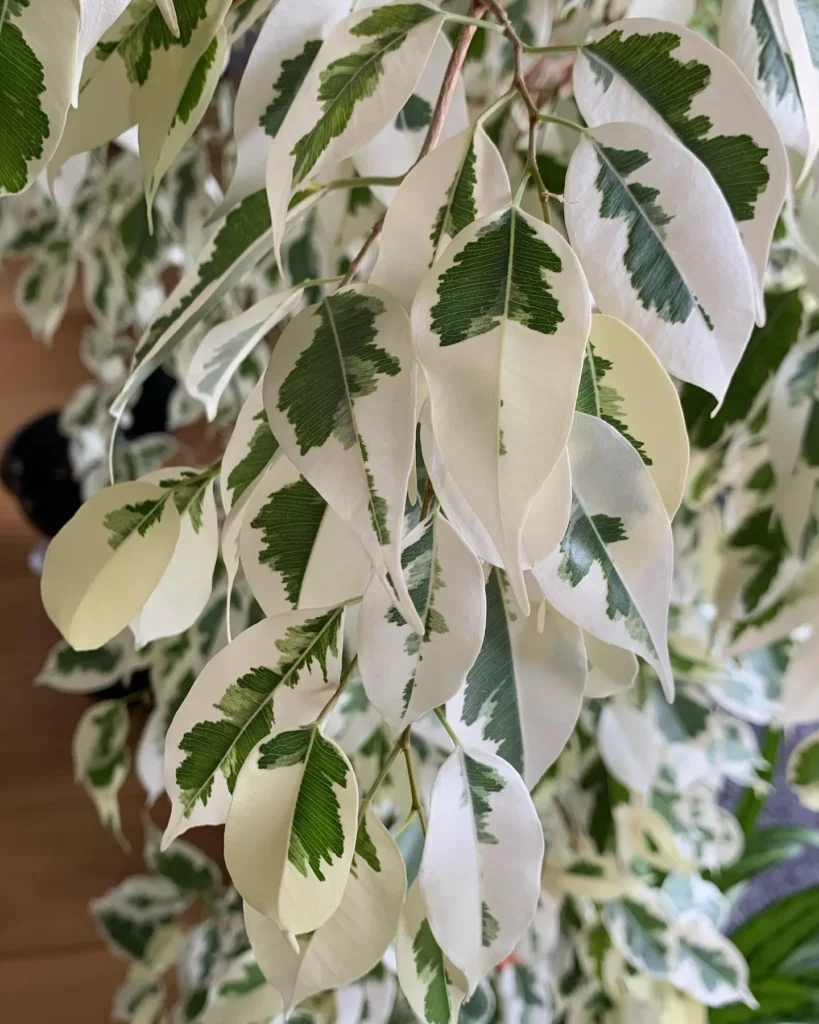
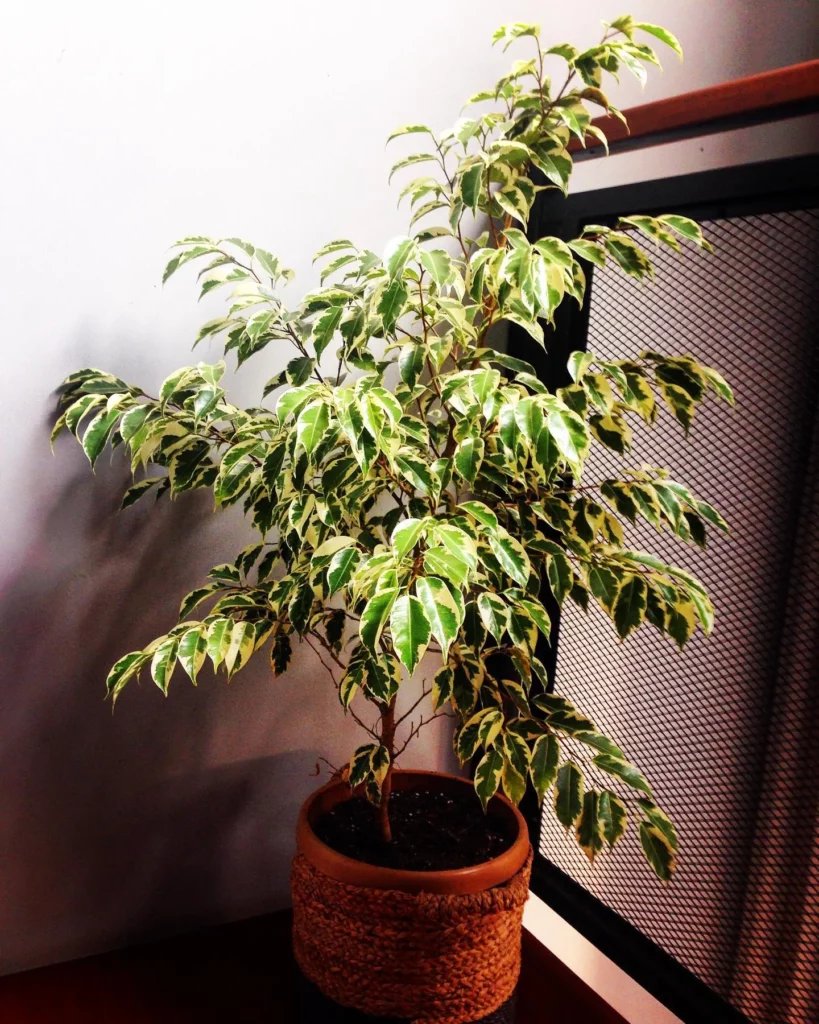
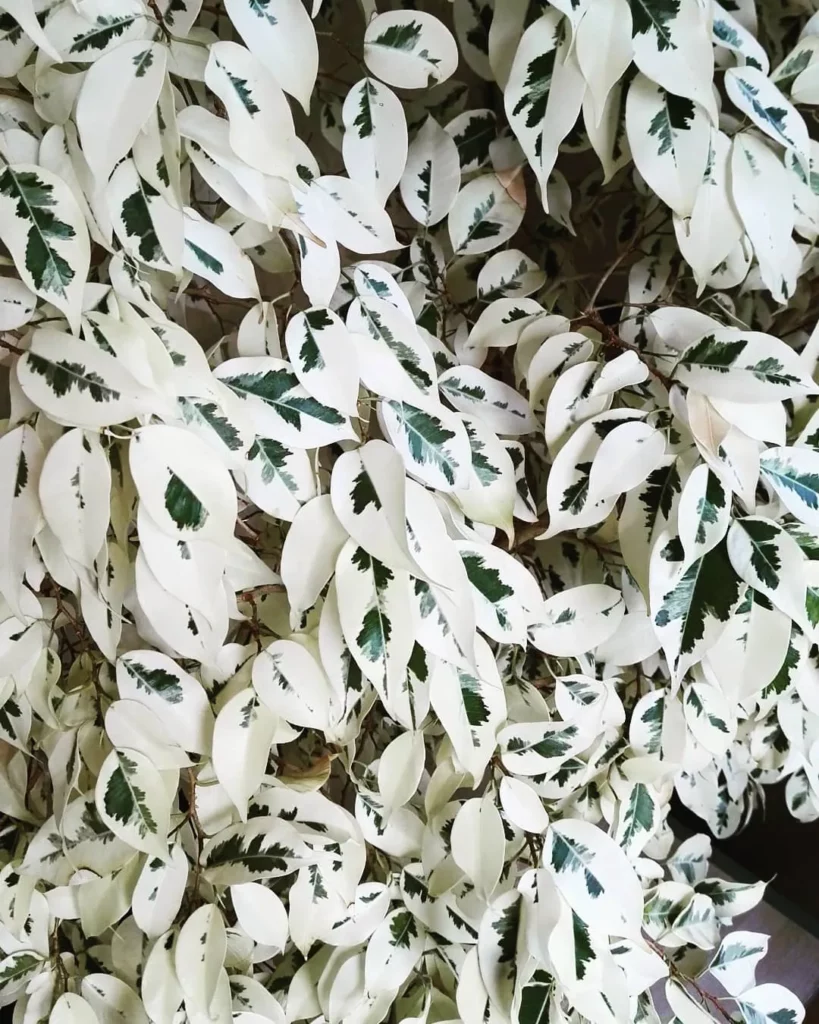
Potting and repotting Ficus benjamina Starlight is essential for its well-being and continued growth. By providing the right container and potting mix, you can ensure that your plant has enough space to develop a strong root system and access the necessary nutrients. Here are some tips to help you successfully pot and repot your Ficus benjamina Starlight.
Selecting the Right Container
When choosing a pot or container for your Ficus benjamina Starlight, opt for one that is slightly larger than its current pot. This will allow the roots to spread comfortably and prevent overcrowding. Ensure that the container has drainage holes at the bottom to prevent water from accumulating and causing root rot.
Choosing the Appropriate Potting Mix
Ficus benjamina Starlight thrives in well-draining soil. Use a high-quality potting mix that is specifically formulated for houseplants. You can also create your own mix by combining equal parts of peat moss, perlite, and vermiculite. This will provide adequate drainage while retaining enough moisture for the plant’s roots.
Providing Essential Care during the Transition
When repotting your Ficus benjamina Starlight, handle the plant with care to avoid damaging the delicate roots. Gently loosen the root ball and remove any excess soil before placing it in the new container. Ensure that the plant is centered and upright while filling the remaining space with the potting mix. After repotting, water the plant thoroughly to settle the soil and provide moisture to the roots.
| Container Size | Potting Mix |
|---|---|
| Slightly larger than current pot | High-quality potting mix or DIY mix (peat moss, perlite, vermiculite) |
Pruning and Shaping Ficus benjamina Starlight
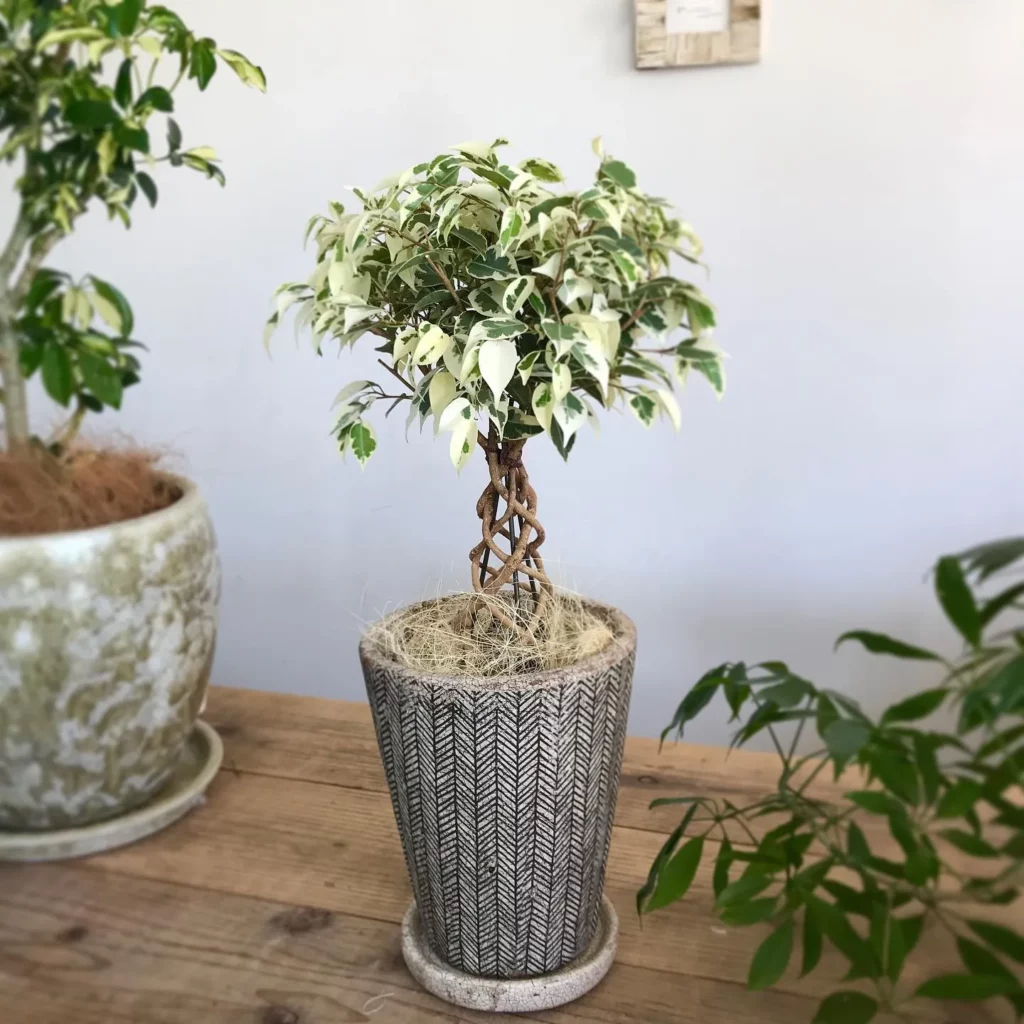
Pruning and shaping Ficus benjamina Starlight is necessary to keep the plant looking its best and to prevent it from becoming unruly. Regular pruning helps maintain the desired form and encourages healthy growth. When pruning, it is important to use clean, sharp pruning shears to avoid damaging the plant.
One method of pruning is to remove dead or damaged branches, as well as any crossing or overcrowded branches. This opens up the plant, allowing for better air circulation and sunlight penetration. It also helps prevent the spread of diseases and pests. Additionally, pruning can be done to control the size of the plant, especially if it starts getting too large for its space.
“Pruning and shaping Ficus benjamina Starlight is like giving the plant a haircut. It helps maintain its shape and promotes new growth,” says gardening expert John Smith.
When shaping Ficus benjamina Starlight, it’s important to consider the overall aesthetic you want to achieve. Whether you prefer a bushy, compact form or a more open, airy look, pruning can help you achieve your desired shape.
To create a fuller appearance, prune the tips of the branches to encourage branching and new growth. If you want a more open look, selectively prune branches to create space between them.
Pruning Tips for Ficus benjamina Starlight:
- Prune in late winter or early spring before the new growth begins.
- Always use clean, sharp pruning shears to make clean cuts.
- Remove dead or damaged branches, as well as any crossing or overcrowded branches.
- Create the desired shape by selectively pruning branches.
- Trim the tips of branches to encourage branching and fuller growth.
- Step back periodically to assess the plant’s overall shape and make adjustments as needed.
| Plant Type | Shrub |
|---|---|
| Mature Size | Up to 10 feet tall, up to 6 feet wide |
| Sun Exposure | Medium to bright indirect light |
| Soil Type | Well-draining potting mix |
| Hardiness Zones | 10-11 |
| Native Area | Tropical regions of Southeast Asia |
| Toxicity | May cause mild irritation if ingested; keep away from children and pets |
Temperature Requirements for Ficus benjamina Starlight


Maintaining proper temperature conditions is crucial for the health and well-being of Ficus benjamina Starlight. This stunning houseplant thrives in warm, tropical environments, so it is essential to provide it with a consistent temperature range of 65 to 75 degrees Fahrenheit (18 to 24 degrees Celsius) during the day.
Avoid exposing the plant to temperatures below 60 degrees Fahrenheit (15 degrees Celsius) as it can lead to leaf drop and overall decline in health.
“Consistency is key when it comes to temperature for Ficus benjamina Starlight. Rapid temperature fluctuations can cause stress to the plant and disrupt its growth. It’s essential to keep the plant away from drafty areas, such as near doors or windows, which can expose it to cold air.”
During winter months, when indoor heating can result in dry air, it is vital to maintain adequate humidity levels around the plant. Consider using a humidifier or placing the plant on a humidity tray filled with water and pebbles to increase moisture in the immediate environment. This will help prevent the leaves from drying out and enhance the overall health of the plant.
Protecting Ficus benjamina Starlight from Extreme Temperatures
Ficus benjamina Starlight is sensitive to extreme temperature conditions, both hot and cold. Direct exposure to intense sunlight or prolonged exposure to temperatures above 90 degrees Fahrenheit (32 degrees Celsius) can cause leaf burn and damage.
It is important to shield the plant from intense sunlight by placing it in a location with bright, indirect light or using sheer curtains to filter the sunlight.
In colder climates, if you need to move your Ficus benjamina Starlight outdoors during the summer months, make sure to acclimate it gradually to the outdoor conditions. Start by placing it in a shaded area, gradually exposing it to more sunlight over a period of weeks. Similarly, when it’s time to bring the plant back indoors for the winter, do so gradually to prevent shock.
| Temperature Range | Effect on Ficus benjamina Starlight |
|---|---|
| Below 60 degrees Fahrenheit (15 degrees Celsius) | Leaf drop and decline in health |
| Over 90 degrees Fahrenheit (32 degrees Celsius) | Leaf burn and damage |
Humidity Requirements for Ficus benjamina Starlight
Creating a suitable humidity level is essential to ensure the thriving of Ficus benjamina Starlight in your home. This beautiful houseplant originates from tropical regions, where it is accustomed to higher humidity levels. To replicate its natural habitat, it is crucial to provide adequate humidity to promote healthy growth and prevent common issues such as leaf drop and browning.
One way to increase humidity is by placing a tray filled with water near the plant. As the water evaporates, it creates moisture in the air surrounding the plant. You can also use a humidifier specifically designed for indoor plants to maintain the ideal humidity level.
Another effective method is to group your Ficus benjamina Starlight with other plants, as they release moisture through transpiration, creating a microclimate with higher humidity.
Tip: Mist the leaves of your Ficus benjamina Starlight using a spray bottle filled with room temperature water. This helps to simulate the natural dew that would occur in its native environment and increase humidity.
Signs of Low Humidity
If the humidity levels are too low, you may observe several signs of distress in your Ficus benjamina Starlight. The leaves may become droopy, wilted, or develop brown edges. In severe cases, the leaves can even fall off prematurely. Additionally, low humidity can create an ideal environment for pests such as spider mites and mealybugs.
Monitoring and adjusting the humidity levels will help prevent these issues and maintain the health and beauty of your plant.
| Low Humidity Symptoms | Possible Solutions |
|---|---|
| Droopy or wilted leaves | Increase humidity through methods mentioned above |
| Brown edges on leaves | Mist leaves regularly and maintain proper humidity |
| Leaf drop | Create a more humid environment and keep consistent moisture levels |
Watering and Fertilizing Ficus benjamina Starlight
Providing the correct amount of water and essential nutrients is vital for the health and growth of Ficus benjamina Starlight. Proper watering practices will help prevent both under-watering and over-watering, which can lead to leaf drop and root rot, respectively. When it comes to watering your Ficus benjamina Starlight, it is crucial to strike a balance.
One way to determine when to water your plant is by checking the moisture level of the soil. Insert your finger about an inch into the soil; if it feels dry, it’s time to water. However, if it still feels slightly moist, it’s best to wait a little longer before watering. Remember that Ficus benjamina Starlight prefers slightly moist soil rather than soil that is constantly wet.
When watering, ensure that you do so thoroughly, allowing the water to penetrate the root ball. Afterward, allow any excess water to drain away, as sitting in waterlogged soil can be detrimental to the plant’s health. It is worth noting that during the winter months, when the plant is in its dormant phase, you should reduce watering frequency to avoid overwatering.
In terms of fertilizing, Ficus benjamina Starlight benefits from regular feeding during the growing season, which typically spans from spring to early fall. Choose a balanced liquid houseplant fertilizer and dilute it according to the manufacturer’s instructions.
Apply the fertilizer every two to four weeks, avoiding excessive amounts that can cause leaf burn. During the dormant period, reduce or stop fertilizing altogether.
| Watering Tips for Ficus benjamina Starlight | Fertilizing Tips for Ficus benjamina Starlight |
|---|---|
|
|
Pest Control and Common Problems for Ficus benjamina Starlight
Despite being relatively low-maintenance, Ficus benjamina Starlight can occasionally face challenges in the form of pests and other issues. It’s important to be aware of these potential problems and take proactive steps to address them, ensuring the health and vitality of your plant.
Here are some common pests and problems you may encounter with your Ficus benjamina Starlight, along with effective solutions to combat them:
Pest Infestations:
Ficus benjamina Starlight can be susceptible to pests such as spider mites, mealybugs, and scale insects. These tiny creatures can wreak havoc on your plant by sucking sap, causing leaf discoloration, and weakening its overall health. To combat these pests, you can use a combination of organic insecticidal soap and neem oil.
Regularly inspect the leaves and stems for signs of infestation and apply the solution according to the manufacturer’s instructions. This will help eliminate the pests and prevent their return.
Leaf Drop:
Leaf drop is a common issue with Ficus benjamina Starlight and can be caused by various factors, including environmental changes, overwatering, or underwatering. To prevent excessive leaf drop, make sure your plant is not exposed to sudden temperature fluctuations or drafts.
Additionally, ensure that you are providing the right amount of water – neither too much nor too little. It’s important to keep the soil evenly moist but not waterlogged. If you notice leaf drop, adjust the watering schedule accordingly and ensure proper drainage to avoid overwatering.
Root Rot:
Overwatering or poor drainage can lead to root rot in Ficus benjamina Starlight. This fungal disease affects the roots, causing them to become soft, discolored, and eventually die. To prevent root rot, make sure your plant is potted in well-draining soil and a container with drainage holes.
Allow the soil to dry out slightly between waterings to prevent waterlogged conditions. If you suspect root rot, carefully remove the plant from its pot, trim away any affected roots, and repot it in fresh, well-draining soil. Adjust your watering routine to avoid future occurrences.
| Pest/Problem | Symptoms | Solution |
|---|---|---|
| Spider Mites | Webbing, yellowing leaves, stippling | Apply organic insecticidal soap and neem oil |
| Mealybugs | White, cotton-like clusters on leaves and stems | Treat with a mixture of alcohol and water or neem oil |
| Scale Insects | Small, hard bumps on leaves and stems | Scrape off with a soft brush or treat with neem oil |
| Leaf Drop | Excessive leaf shedding | Maintain stable temperatures and adjust watering |
| Root Rot | Soft, discolored roots | Improve drainage and repot in fresh soil if necessary |
Conclusion
Congratulations! You now have a comprehensive understanding of how to care for Ficus benjamina Starlight, allowing you to enjoy its radiant growth and beauty in your home. Throughout this Ultimate Ficus benjamina Starlight Care Guide, we have covered everything you need to know to ensure the health and vitality of this stunning houseplant.
From learning about the characteristics and botanical information of Ficus benjamina Starlight to exploring the various aspects of its care, including light requirements, soil preferences, and temperature and humidity needs, you are well-equipped to provide the optimal conditions for your plant’s growth.
In addition to the essential care guidelines, we have also provided insights into propagation techniques, potting and repotting processes, pruning and shaping tips, and effective pest control methods. Armed with this knowledge, you can confidently nurture and maintain your Ficus benjamina Starlight, enjoying its lush foliage and graceful presence for years to come.
Remember, Ficus benjamina Starlight is a versatile and resilient plant, capable of bringing life and beauty to various indoor spaces. Whether you choose to showcase it as a statement piece in your living room or add a touch of greenery to your office, this magnificent plant is sure to captivate with its unique variegated leaves and elegant form.
So go ahead, bring home a Ficus benjamina Starlight and embark on a rewarding journey of nurturing and caring for this stunning houseplant. With the knowledge and tips provided in this guide, you are well-prepared to create the perfect environment for your Ficus benjamina Starlight to thrive and flourish. Enjoy the beauty and tranquility it will bring to your home.
Make sure to check out our article on Ficus benjamina Golden King Care Guide. And after reading that Ficus article, check out our article on Ficus benjamina Variegata Care Guide.
FAQ
Q: What are the common names of Ficus benjamina Starlight?
A: Common names for Ficus benjamina Starlight include Weeping Fig Starlight and Variegated Weeping Fig.
Q: What is the botanical name of Ficus benjamina Starlight?
A: Ficus benjamina Starlight is the botanical name for this plant.
Q: What family does Ficus benjamina Starlight belong to?
A: Ficus benjamina Starlight belongs to the Moraceae family.
Q: What type of plant is Ficus benjamina Starlight?
A: Ficus benjamina Starlight is a tropical evergreen tree or shrub.
Q: What is the mature size of Ficus benjamina Starlight?
A: Ficus benjamina Starlight can reach a mature height of about 6 to 10 feet (1.8 to 3 meters) when grown indoors.
Q: What is the sun exposure requirement for Ficus benjamina Starlight?
A: Ficus benjamina Starlight prefers bright, indirect light but can tolerate some shade.
Q: What type of soil and pH level does Ficus benjamina Starlight prefer?
A: Ficus benjamina Starlight thrives in well-draining soil with a pH range of 6.0 to 7.5.
Q: When does Ficus benjamina Starlight bloom?
A: Ficus benjamina Starlight may produce small, insignificant flowers throughout the year, although it is primarily grown for its foliage.
Q: What is the flower color of Ficus benjamina Starlight?
A: The flowers of Ficus benjamina Starlight are typically greenish-yellow.
Q: What are the hardiness zones for Ficus benjamina Starlight?
A: Ficus benjamina Starlight is best suited for hardiness zones 10 to 12, which corresponds to tropical and subtropical regions.
Q: Where is Ficus benjamina Starlight native to?
A: Ficus benjamina Starlight is native to Southeast Asia and Australia.
Q: Is Ficus benjamina Starlight toxic to humans and animals?
A: Yes, all parts of Ficus benjamina Starlight are toxic if ingested by humans or animals. It is important to keep it out of reach of children and pets.
Q: How much light does Ficus benjamina Starlight need?
A: Ficus benjamina Starlight requires bright, indirect light but can tolerate some shade.
Q: What type of soil should I use for Ficus benjamina Starlight?
A: Ficus benjamina Starlight thrives in well-draining soil, such as a mixture of potting soil, perlite, and peat moss.
Q: How often should I water Ficus benjamina Starlight?
A: Water Ficus benjamina Starlight when the top inch of soil feels dry, but avoid overwatering as it is more tolerant of underwatering than overwatering.
Q: What is the ideal temperature range for Ficus benjamina Starlight?
A: Ficus benjamina Starlight prefers temperatures between 60°F and 75°F (15°C and 24°C), but can tolerate slightly cooler or warmer conditions.
Q: How do I fertilize Ficus benjamina Starlight?
A: Feed Ficus benjamina Starlight with a balanced liquid fertilizer diluted to half strength every 2-4 weeks during the growing season.
Q: What are the different types of Ficus benjamina Starlight?
A: There are various cultivars of Ficus benjamina Starlight, including those with different leaf variegation patterns.
Q: How can I propagate Ficus benjamina Starlight?
A: Ficus benjamina Starlight can be propagated through stem cuttings or air layering methods.
Q: How do I pot and repot Ficus benjamina Starlight?
A: When potting or repotting Ficus benjamina Starlight, choose a container with good drainage, use a well-draining potting mix, and provide proper care during the transition.
Q: How should I prune and shape Ficus benjamina Starlight?
A: Pruning and shaping Ficus benjamina Starlight is important for maintaining its desired form. Regularly trim back overgrown branches and remove any dead or yellowing leaves.
Q: What are the temperature requirements for Ficus benjamina Starlight?
A: Ficus benjamina Starlight prefers temperatures between 60°F and 75°F (15°C and 24°C) but can tolerate slightly cooler or warmer conditions. Protect it from extreme temperature fluctuations.
Q: How can I provide adequate humidity for Ficus benjamina Starlight?
A: Increase humidity for Ficus benjamina Starlight by misting its leaves, placing it on a tray filled with water and pebbles, or using a humidifier.
Q: How often should I water and fertilize Ficus benjamina Starlight?
A: Water Ficus benjamina Starlight when the top inch of soil feels dry, and fertilize it every 2-4 weeks during the growing season with a diluted liquid fertilizer.
Q: What are common pests and diseases that can affect Ficus benjamina Starlight?
A: Common pests for Ficus benjamina Starlight include spider mites, aphids, and scale insects. It is also susceptible to diseases such as leaf spot and root rot.


